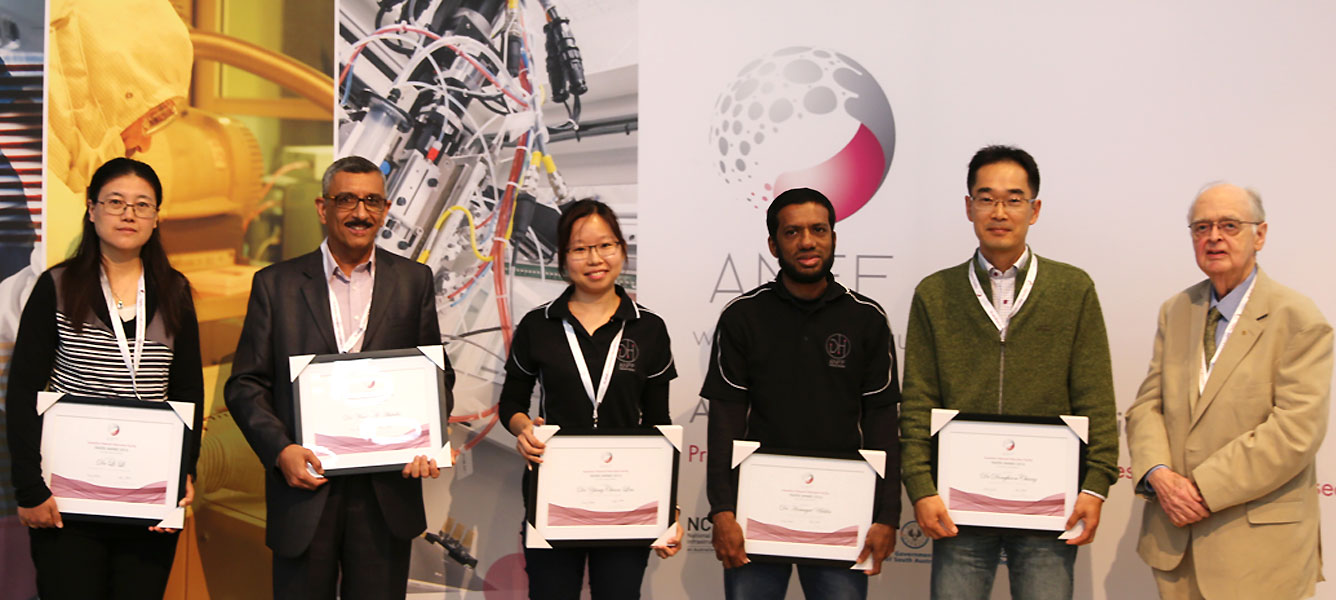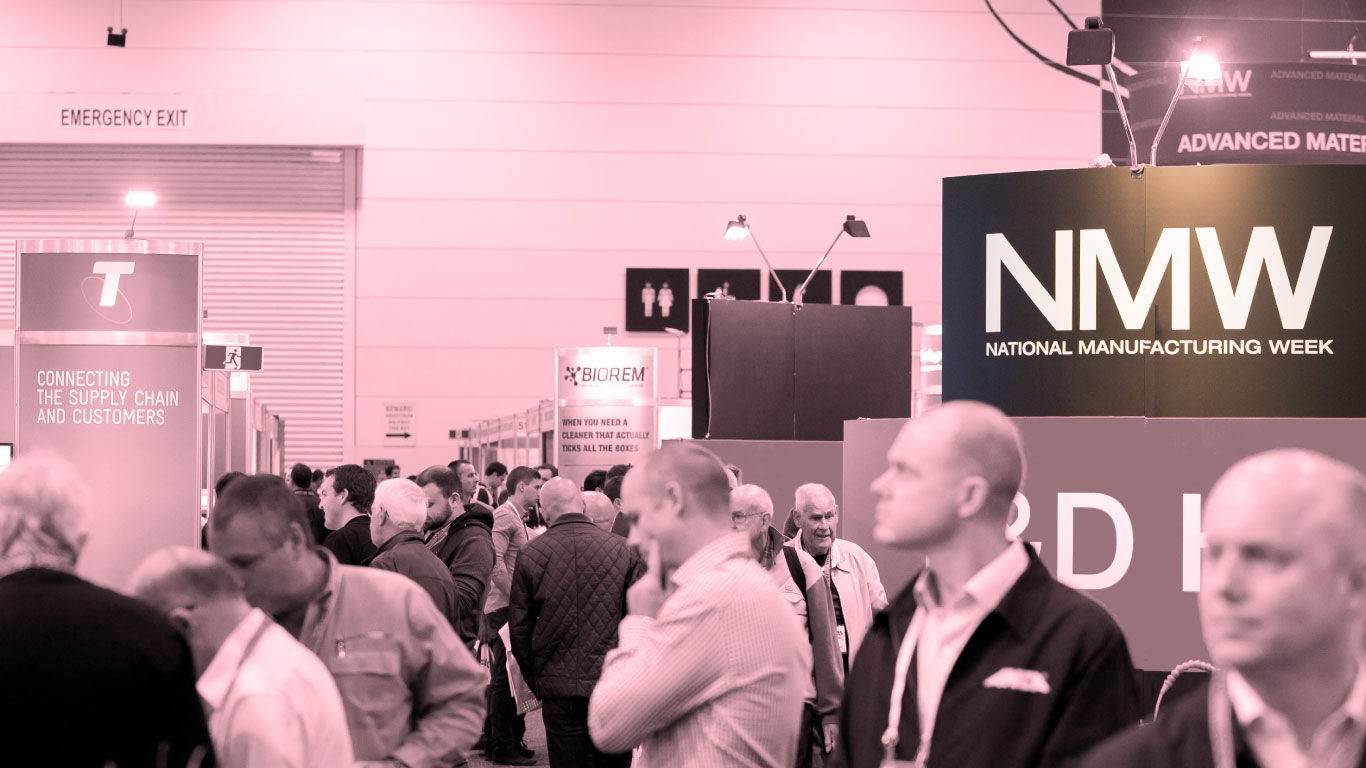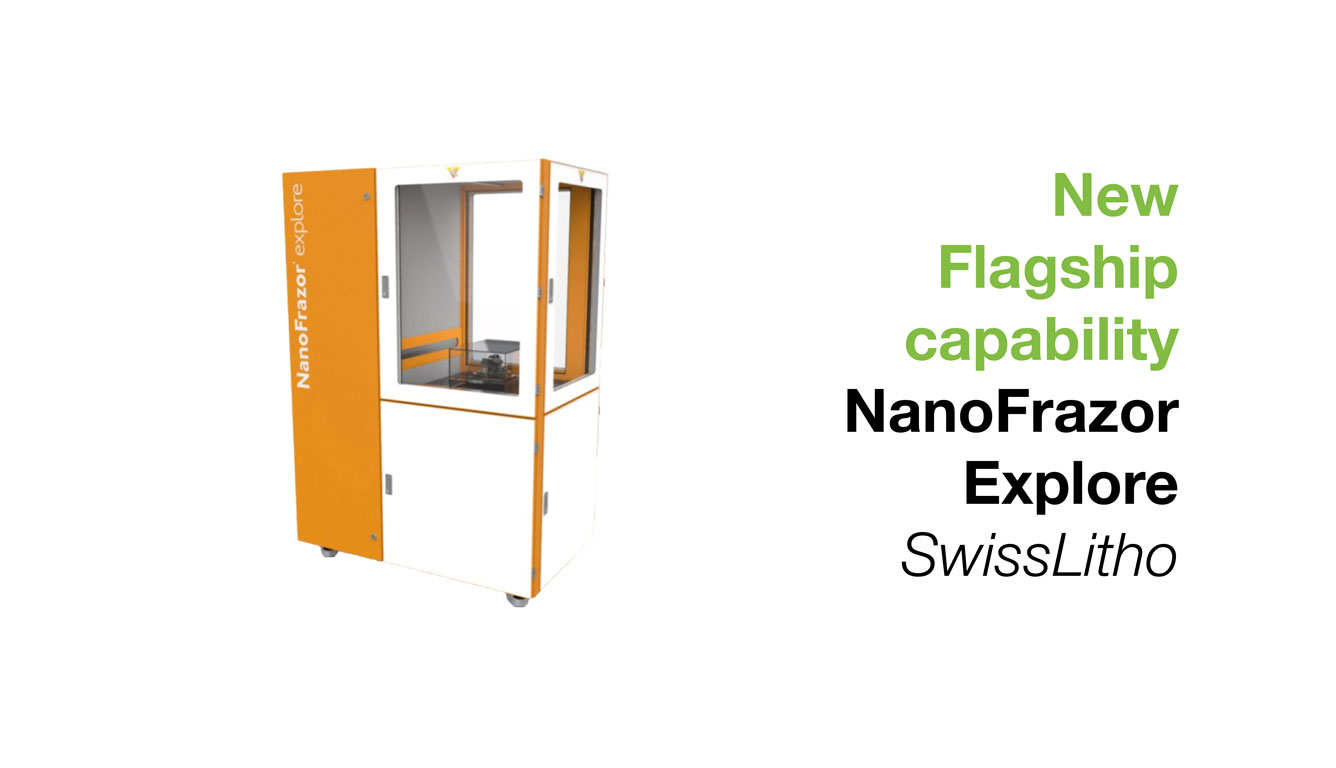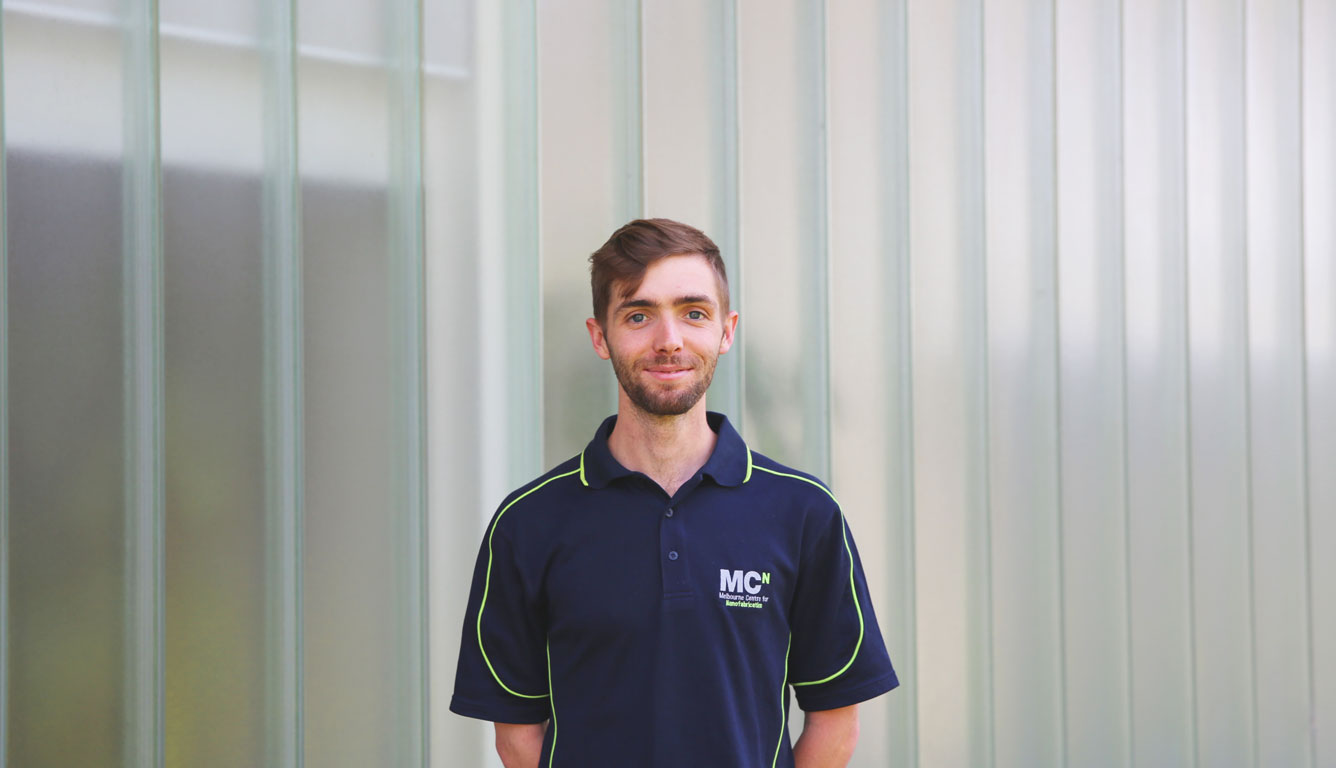Delicious diversity on display at MCN
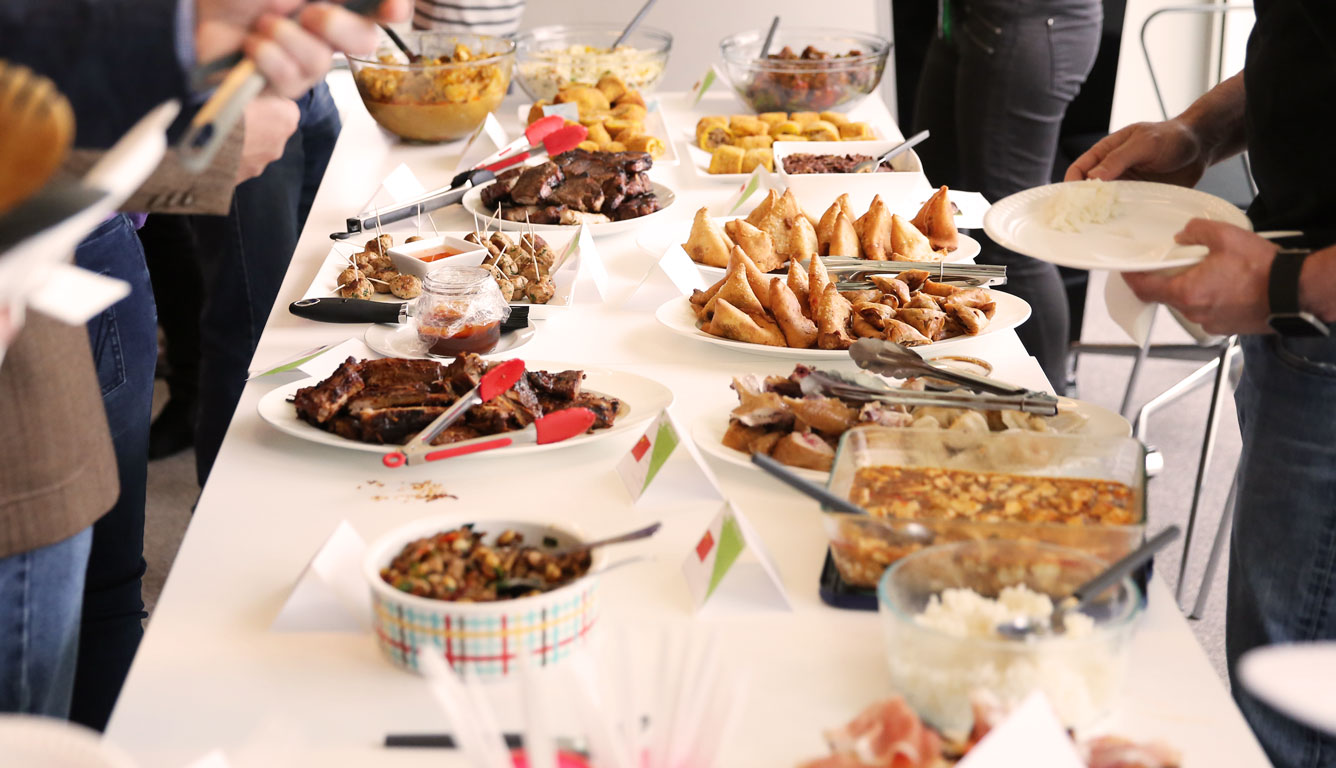
MCN hosted its third annual Diversity Lunch on 27 April 2017, celebrating the Centre’s international staff and user community with home cooked food from around the world.
Awards for best presented and tastiest dish were voted for on the day, resulting in a victory for Gediminas Gervinskas’ “1,000 layer” honey cake (pictured below) that took home both prizes.
With around 30 guests and dishes from more than 15 countries, competition was fierce but Gediminas’ perfect layers – which were apparently the result of years of training in thin film deposition techniques – not only tasted delicious, they looked amazing as well.

Following the food was a hard-fought battle to crown the first MCN Table Tennis champion in the MCN courtyard. Blood, sweat and tears were spilt, resulting in a thumping win for Raj Minhas who left ANFF-VIC staff and fellow users weeping in his wake.
MCN thanks all those who came for a fantastic afternoon of food and fun. Stay tuned for next year’s event!
Call for content

With the recent appointment of our new Marketing and Communications Officer, one of the things we are keen to do is increase our coverage of user research.
We want you to tell us what you’re up to!
We want papers, project plans, photos and anything else that will help us bring your research to the masses.
Case studies are promoted across all of ANFF-VIC and ANFF’s communication channels. These include the widely distributed annual Casebook, the website, social media channels, newsletters, posters, and taken to trade shows around the world.
If you are an MCN or ANFF-VIC user and would like to highlight your research, we invite you to submit a case study to us at mcn-enquiries@nanomelbourne.com using the MCN case study template.
There is also a push to collect images of researchers work for use in ANFF-VIC material.
Images taken of work conducted at any of the ANFF-VIC hubs should be sent to mcn-images@nanomelbourne.com. You will be notified if any submissions are used, they will be credited to the sender (unless otherwise specified).
Frater Award winners begin their travels
Dr Hemayet Uddin, an MCN Process Engineer, has travelled to SwissLitho in Zurich, Switzerland to gain first-hand expert knowledge of MCN’s new NanoFrazor tool.
The Australian National Fabrication Facility (ANFF), is sponsoring the trip as part of the Frater Award platform – a professional development award given to ANFF staff for outstanding achievement. Named after ANFF’s first chairman, Dr Robert Frater AO (pictured far right), Frater Awards fund local or international travel aimed at fostering technical and professional growth.
Hemayet (pictured centre right) was one of two MCN staff to be awarded a Frater Award at last year’s ANFF Annual Research Showcase, held 15-17 November 2016. Dr Yang Lim (pictured centre left), a fellow process engineer at MCN, was also a recipient of the award.
Hemayet has used the opportunity to travel to Switzerland for on-site training at SwissLitho, IBM and ETH to strengthen his expertise in Thermal Scanning Probe Lithography (t-SPL) and related supporting processes.
Yang will be setting off in the third quarter of 2017 to train with experts from Intlvac Thin Film Corp in Toronto, Canada at the company’s extensive training facility to add to her knowledge of advanced electron beam evaporation techniques and MCN’s Intlvac Nanochrome II instrument.
In total, five ANFF employees received a Frater Award – Yang and Hemayet, as well as Dr Li Li (ANFF-ACT), Dr Wael Al Abdulla (ANFF-Q), and Dr Donghoon Chang (ANFF-SA).
Publication acknowledgements and usage credits
MCN has seen strong growth in the number of publications that have correctly acknowledged the centre, doubling in 2016 to an average of 12 per month.
However, not all MCN-related publications are meeting the requirements of the user agreement. Being correctly acknowledged in publications is essential to the way MCN, ANFF-VIC and ANFF are funded.
This is a reminder that all users are required to correctly acknowledge ANFF facilities in any published research that was assisted by ANFF equipment or expertise.
MCN offers a $200 incentive for use of the correct acknowledgement, which can be applied to usage of MCN capabilities. MCN must be made aware of the acknowledgment within 30 days of the paper being published in order to qualify.
Please include acknowledgements in the following form and report any new publications to the MCN facility manager.
Papers: Please use the following in the acknowledgement section of any papers. “This work was performed in part at the Melbourne Centre for Nanofabrication (MCN) in the Victorian Node of the Australian National Fabrication Facility (ANFF)”
Presentations: The MCN logo should be included on the acknowledgements slide of a presentation. Alternatively, contact Tom Eddershaw to request an MCN/ANFF-VIC presentation template.
Upcoming closure for Easter break
The MCN laboratories will be closed to users for the Easter shutdown from Friday 14 April – Tuesday 18 April (inclusive), and will re-open on Wednesday 19 April 2017
(Access will be granted by special application only)
Please note:
The General Induction & Dangerous Goods Waste Management Induction scheduled for Monday, 17th April have been cancelled, due to the Easter public holiday.
ANFF-VIC is going to National Manufacturing Week 2017
ANFF-VIC is heading to National Manufacturing Week 2017, being held 9-12 May at the Melbourne Conference and Exhibition Centre.
If you’re heading to the show come and visit us at booth #2426, directly next to the Industry 4.0 Theatre.
Trade shows like this are a fantastic place to see the direction in which industry is heading and to demonstrate the application of research conducted at facilities like those within the ANFF network.
We’re going to be showcasing both our services, and the capabilities available across the ANFF network so if you’re interested in finding out more be sure to pop by.
Registration is free, follow this link to skip the queues. There’s plenty of public transport available, as well as parking, head to the NMW website to find out more.
We hope to see you there!
New flagship tools and new capabilities across ANFF-VIC
SwissLitho’s NanoFrazor Explore is the latest addition to MCN’s capabilities list. Image credit: SwissLitho/IBM
New tools and capabilities have recently been added across the ANFF-VIC Node, notably at MCN and La Trobe’s Centre for Materials and Surface Science.
Training and introductory seminars are being planned for the new equipment so stay tuned for further announcements.
MCN has added a new flagship nanolithography tool to its arsenal, with SwissLitho’s NanoFrazor Explore.
The system uses Thermal Scanning Probe Lithography to produce micro/nanoscale structures and patterns with nanometre accuracy.
The NanoFrazor uses a scanning probe, heated to around 1,000ºC to rapidly evaporate a specialised polymer material. By varying the force applied by the scanning the probe as it writes, intricate 3D structures can be created. This allows for the fabrication of optical devices, for example, including aspherical microlenses and tapered waveguides. The technology can be harnessed for a host of potential end applications including plasmonics, nanoelectronics and storage devices to name but a few.
By allowing the heated element to cool — a process that takes microseconds — this same probe can then be used to scan the material’s surface, providing real-time information about its topography.
MCN has also increased its capabilities list with a new wedge bonder, the F&S Bondtec 5832. Suited for medium-scale production packaging, the new system is capable of fully automated wire bonding operations, using integrated pattern recognition technology. The instrument is also suitable for packages with deep-access requirements and can handle a range of wire diameters and types (including ribbon). The 5832 has a broad stage footprint of 150mm x 150mm, 100mm vertical travel of the bond head and positioning accuracy of: 300nm (Z); 2μm (XY).
ANFF-VIC’s La Trobe Hub, the Centre for Materials and Surface Science (CMSS), has installed a new sample mounting system for its XPS and ToF-SIMS surface analysis instruments.
The new system allows for far more efficient and flexible analyses, batched submission of samples, and transfer of samples between XPS and ToF-SIMS without remounting.
At the beginning of 2017, MCN added NeaSPEC’s NeaSNOM. The NeaSNOM is an atomic force microscope which is capable of performing scattering-type Scanning Near-field Optical Microscopy (s-SNOM). The s-SNOM technique allows the user to overcome the diffraction limit of conventional light microscopy or spectroscopy. This enables optical measurements at a spatial resolution of 10nm, not only at visible frequencies but also a range of mid-infrared frequencies.
Results of 2016 User Satisfaction Survey
At the end of 2016, MCN conducted its annual User Satisfaction Survey to ensure that the centre is performing to its users’ expectations.
The results show that MCN continues to deliver a high-quality service according to the user cohort, averaging scores of more than 4.2 out of 5 in all key areas including timeliness for tool access, consulting expertise, operating performance, staff communication, and waiting period for training.
The report also showed that the number of tools used on a per user basis grew from 2015, indicating that users are making use of an increasingly diverse tool set. It was particularly encouraging to see the strong usage of new tools that the centre has brought in.
Feedback highlighted a range of “wish-list” tools and capabilities that were in demand, all of which are now being investigated.
MCN would like to thank all participants of the survey and hopes that all users will be adding their input to the 2017 survey which will be organised at the end of the year.
Recent publications
Here’s a collection of the recently published papers that have made use of ANFF-VIC’s open access facilities. To see more of the latest ANFF-enabled research, head to our publications page.
| Title | Journal | Authors |
| A microfluidic system for studying particle deposition during ultrafiltration | Journal of Membrane Science | H. Di, G. Martin and D. Dunstan |
| Energetic deposition, measurement and simulation of graphitic contacts to 6H-SiC | Microelectronics Reliability | H. Tran, M. Kracica, D. McCulloch, E. Mayes, A. Holland and J. Partridge |
| A Green Route to Conjugated Polyelectrolyte Interlayers for High-Performance Solar Cells | Angewandte Chemie | J. Subbiah, V. Mitchell, N. Hui, D. Jones and W. Wong |
| Revealing the sequence of interactions of PuroA peptide with Candida albicans cells by live-cell imaging | Scientific Reports | N. Shagaghi, M. Bhave, E. Palombo and A. Clayton |
Welcoming the new ANFF-VIC Marketing Officer
On behalf of the Victorian Node of the Australian National Fabrication Facility (ANFF-VIC), MCN is pleased to welcome Tom Eddershaw as the new Marketing and Communications Officer for ANFF-VIC and ANFF.
Tom’s duties will see him heavily interacting with staff and users, promoting the hard-earned fruits of their labour. By creating a range of print and web-based content, Tom will tell the stories of ANFF users and staff, while making sure knowledge of the ANFF network’s capabilities is spread to all researchers.
As MCN offers a perfect location for guest seminars and talks, the Tom will be aiming to increase the amount of these events and helping users organise events of their own.
Tom has a background in science journalism and is very keen to assist users with writing media-ready material and taking/preparing images to accompany this content. He will also being available to offer advice about writing for press, prepping for interviews and science communication in general.
If you have any questions, want to arrange a meeting or just want to say “Hi”, talk to Tom.

